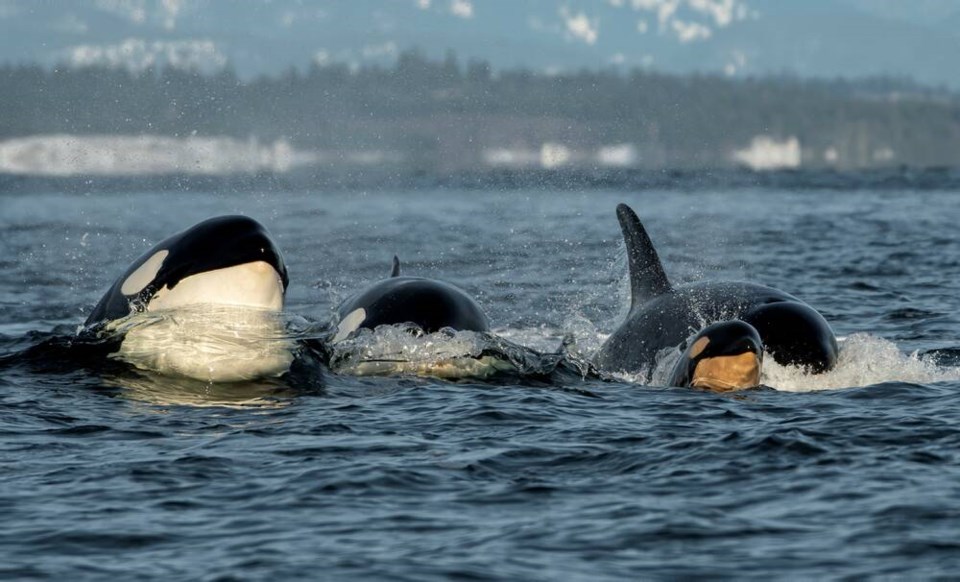It was a record year for orca and humpback whale sightings — and their newborns — in the Salish Sea in 2021.
The Pacific Whale Watch Association, which has 29 member companies departing 24 ports from Seattle to Telegraph Cove, said Bigg’s killer whales were the most frequently documented whales in the region last year, followed by humpback whales, gray whales and minke whales.
Endangered southern resident killer whales, their numbers down to just 74, were encountered the least often.
Erin Gless, executive director of the association, said many tours viewed more than one whale species during their trips, including on Mother’s Day, when several companies reported “grand slams” by spotting orcas, humpbacks, minke whales and gray whales in a single tour.
Monika Wieland Shields, director of the Orca Behavior Institute on San Juan Island, said there were 1,067 unique sightings of Bigg’s killer whales documented in the Salish Sea over 329 days. The previous record in 2019 was 747.
Bigg’s orcas feed on seals and other marine mammals.
In contrast, the salmon-eating southern resident killer whales were documented on just 103 days, or 28% of the year.
“It has been incredible to witness the continued rise of Bigg’s killer whales in the Salish Sea,” said Shields. “In 2021, there were days when we documented 10 different groups of Bigg’s throughout the region, totaling more than 50 whales.”
The Bigg’s population is growing at more than four per cent a year, according to the Department of Fisheries and Oceans Canada.
Eleven new Bigg’s calves were born in 2021.
The most recent, T124A7, was spotted by whale-watching vessels near Victoria on New Year’s Eve. The number 7 at the end of the calf’s ID number indicates it is the seventh baby born to 37-year old mother T124A, “Kittiwake.”
It’s an incredible feat for Kittiwake, said Gless, considering the gestation period for orcas is 16 to 18 months — almost twice that of a human.
“The calf looked great and at one point adorably seemed to take a turn leading the family,” she said.
A record 21 humpback whale calves also accompanied their mothers to the Salish Sea last year, nearly doubling 2020’s count of 11.
The Pacific Whale Watch Association documented humpback whales on 301 days of 2021. Most humpbacks have made the journey to breeding grounds in Hawaii, Mexico and Central America, but Gless said a few still remain in the area.
Seattle-based research group SR3 in September reported three pregnancies in the endangered southern resident killer whale population. No new calves have been observed as yet, but the youngest southern resident calf, L125 or “Element,” estimated at a year old, was seen in late December by researchers with the San Juan Island-based Center for Whale Research and appeared to be doing well.
Whale-watching boats took part in or documented 880 “sentinel actions” during their 2021 ecotours. That means they warned speeding vessels, alerted ferries and cargo ships when whales were in the vicinity, removed harmful marine debris such as balloons and derelict fishing gear or educated boaters on proper viewing distances.
The association said its member vessels were able to “positively change the behavior of other boats” around whales in at least 70% of interventions, resulting in a safer environment for the whales.





